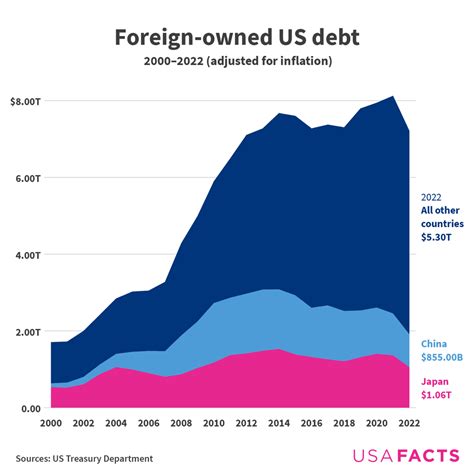Turning 40 often marks a significant milestone in a man’s life, a time when many aspire to have a solid financial footing. This isn’t just about having money, but about achieving financial security, flexibility, and the freedom to pursue life’s opportunities. Building real wealth by this age requires proactive planning, consistent effort, and a strategic approach to both debt elimination and investment.
Understanding Your Current Financial Landscape
The first step toward financial mastery is a clear understanding of where you stand. This involves taking a hard look at your income, expenses, assets, and liabilities. Create a personal balance sheet: list everything you own (assets like savings, investments, property) and everything you owe (liabilities like mortgages, car loans, credit card debt). Calculating your net worth regularly provides a tangible measure of your financial progress.
It’s crucial to track your spending for at least a month to identify where your money is actually going. Many find significant leakage points in discretionary spending that can be redirected towards debt repayment or savings. Use budgeting apps, spreadsheets, or even a simple notebook to gain this critical insight.

Aggressive Debt Elimination Strategies
High-interest debt is a wealth killer. Prioritizing its elimination is paramount for anyone aiming to build real wealth by 40. Credit card balances, personal loans, and certain student loans often carry exorbitant interest rates that make it incredibly difficult to get ahead.
Tackling High-Interest Debt First
Focus on debts with the highest interest rates. This is often credit card debt, which can easily erode any savings or investment gains. Consider debt consolidation loans or balance transfers to lower interest rates if possible, but be wary of simply shifting debt without addressing the underlying spending habits.
Choosing Your Strategy: Snowball vs. Avalanche
Two popular methods for debt repayment are the debt snowball and debt avalanche. The debt avalanche method prioritizes paying off debts with the highest interest rates first, saving you the most money in interest over time. The debt snowball method focuses on paying off the smallest debts first, providing psychological wins that can keep you motivated. Choose the method that best suits your personality and stick with it rigorously.

Building a Robust Financial Foundation
Before aggressively investing for wealth, a solid financial foundation must be in place to protect against unexpected life events and ensure long-term stability.
The Non-Negotiable Emergency Fund
An emergency fund is your financial safety net. Aim to save at least three to six months’ worth of essential living expenses in an easily accessible, high-yield savings account. This fund prevents you from going into debt when unforeseen circumstances like job loss, medical emergencies, or car repairs arise.
Mastering Your Budget and Cash Flow
A well-structured budget is your roadmap to financial success. It helps you allocate your income effectively, ensuring you have enough for living expenses, debt repayment, savings, and investments. Review your budget regularly and adjust it as your income or expenses change. Look for areas to reduce fixed costs and optimize discretionary spending to free up more capital for wealth building.

Strategic Wealth Growth: Investing for the Future
Once debt is under control and an emergency fund is established, the focus shifts to growing your wealth through smart investing. The earlier you start, the more powerful compounding interest becomes.
Maximize Retirement Accounts
Take full advantage of tax-advantaged retirement accounts like 401(k)s, 403(b)s, and IRAs. If your employer offers a 401(k) match, contribute at least enough to get the full match – it’s essentially free money. Explore Roth IRA options if your income allows, as tax-free withdrawals in retirement can be incredibly beneficial.
Diversifying Your Investment Portfolio
Don’t put all your eggs in one basket. Diversify your investments across various asset classes such as stocks (individual and ETFs/mutual funds), bonds, and potentially real estate. A diversified portfolio helps mitigate risk and can provide more consistent returns over the long term. Consider consulting a financial advisor to help create a portfolio aligned with your risk tolerance and goals.
Consider Real Estate and Other Assets
Beyond traditional market investments, real estate can be a powerful wealth builder, whether through owning your home or investing in rental properties. Other alternative assets, if understood and managed properly, can also contribute to diversification and growth.

Boosting Your Income and Financial Education
While managing expenses and investing wisely are crucial, increasing your income accelerates wealth accumulation significantly.
Career Advancement and Skill Development
Invest in yourself through continuous learning and skill development. Pursue certifications, higher education, or new skills that make you more valuable in your profession, enabling you to command higher salaries. Don’t shy away from negotiating your salary and advocating for promotions.
Exploring Side Hustles and Passive Income
Consider starting a side hustle or developing passive income streams. This could be anything from freelancing in your area of expertise, creating digital products, or investing in dividend-paying stocks. Extra income can be directly funneled into debt repayment or investments, speeding up your financial progress.
Continuous Financial Learning
The financial world is constantly evolving. Dedicate time to staying informed about personal finance, investment strategies, and economic trends. Read books, listen to podcasts, and follow reputable financial news sources. The more knowledgeable you are, the better financial decisions you’ll make.

The Power of Consistency and Long-Term Vision
Achieving financial independence and wealth by 40 isn’t a one-time event; it’s a journey requiring consistent discipline and a long-term vision. Regularly review your financial plan, at least once a year, to adjust for life changes, market shifts, and evolving goals. Ensure your insurance coverage (health, life, disability) is adequate to protect your growing assets and your family.
Embrace patience and resilience. There will be market downturns and unexpected expenses, but sticking to your plan and maintaining a disciplined approach will ultimately lead to significant financial success.
Conclusion
Reaching 40 with eliminated debt and substantial wealth is an achievable goal for men willing to put in the work. It involves a systematic approach: understanding your finances, aggressively eliminating debt, building a robust emergency fund, strategically investing in diversified assets, and continuously seeking to increase your income and financial knowledge. By taking these key steps, you can secure not just a comfortable present, but a future filled with financial freedom and opportunity.




